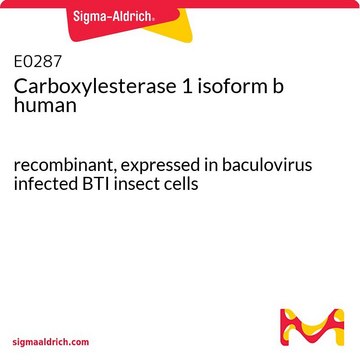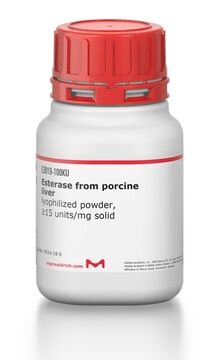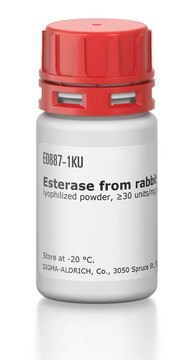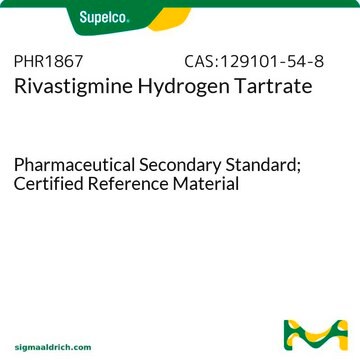C4749
Carboxylesterase 2 human
recombinant, expressed in mouse NSO cells, ≥95% (SDS-PAGE)
Synonym(e):
CES2, CES2A1
About This Item
Empfohlene Produkte
Rekombinant
expressed in mouse NSO cells
Qualitätsniveau
Assay
≥95% (SDS-PAGE)
Form
solution
Spezifische Aktivität
≥1.0 EU/μg
30,000 pmol/min-μg protein
Mol-Gew.
predicted mol wt ~60 kDa
Konzentration
0.4-0.6 mg/mL
Verunreinigungen
≤1.0 EU/μg endotoxin
Versandbedingung
dry ice
Lagertemp.
−70°C
Angaben zum Gen
human ... CES2(8824)
Suchen Sie nach ähnlichen Produkten? Aufrufen Leitfaden zum Produktvergleich
Biochem./physiol. Wirkung
Einheitendefinition
Physikalische Form
Signalwort
Danger
H-Sätze
P-Sätze
Gefahreneinstufungen
Resp. Sens. 1
Lagerklassenschlüssel
10 - Combustible liquids
WGK
WGK 1
Flammpunkt (°F)
Not applicable
Flammpunkt (°C)
Not applicable
Analysenzertifikate (COA)
Suchen Sie nach Analysenzertifikate (COA), indem Sie die Lot-/Chargennummer des Produkts eingeben. Lot- und Chargennummern sind auf dem Produktetikett hinter den Wörtern ‘Lot’ oder ‘Batch’ (Lot oder Charge) zu finden.
Besitzen Sie dieses Produkt bereits?
In der Dokumentenbibliothek finden Sie die Dokumentation zu den Produkten, die Sie kürzlich erworben haben.
Kunden haben sich ebenfalls angesehen
Unser Team von Wissenschaftlern verfügt über Erfahrung in allen Forschungsbereichen einschließlich Life Science, Materialwissenschaften, chemischer Synthese, Chromatographie, Analytik und vielen mehr..
Setzen Sie sich mit dem technischen Dienst in Verbindung.













